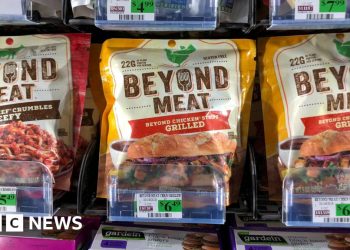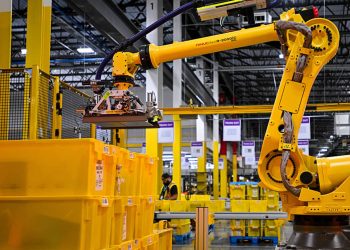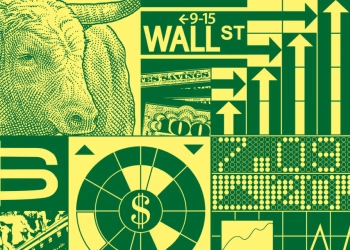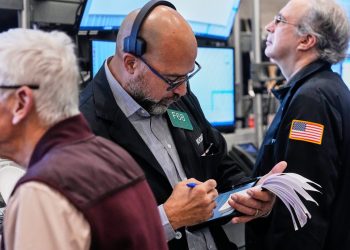Visitors are caught in the reflection of a store offering 50% off all items on the Third Street Promenade in Santa Monica on July 16, 2024.
Genaro Molina | Los Angeles Times | Getty Images
A constant stream of promotions across the fashion industry has left consumers suffering from “discount fatigue” in the run-up to Black Friday and Cyber Monday, according to a new report from consultancy AlixPartners released Wednesday.
The company surveyed more than 9,000 U.S. consumers about their preferences and priorities across 140 retailers and nine fashion industries. The report reveals that shoppers view price increases as “inevitable” and that cost has become less important to them when deciding to purchase new clothing or accessories.
On average, respondents’ focus on price fell 13% from last year and declined across all sectors except luxury and beauty, the survey found. Meanwhile, 30% fewer consumers ranked sales and finding the best deal as “very important” compared to last year, even in the off-price sector, where finding deals fell from the highest rank respondents considered to 19th.
Following President Donald Trump’s tariff increases in dozens of countries in April, retailers relied on discounts and promotions to ease consumer concerns about rising prices due to trade policy, said Sonia Lapinsky, head of AlixPartners’ global fashion practice and author of the report. But there is now “fatigue” around promotions and shoppers are looking for more than just a discount, she said.
Consistent pricing between stores and online, value for money and quality are among shoppers’ top priorities when spending, she said. They are also looking for a better in-store experience. While more than 60% of surveyed shoppers plan to do more than half of their fashion purchases in-store this holiday, shoppers’ time spent in stores has fallen by 3% and basket size by 5% over the past two years, according to the report. Percentage change on average. weekly visits per store, dwell time and basket size1. Cohort of 50 US retailers, first 20 weeks of 2023 to 2025
“We have higher foot traffic and lower baskets. There’s something missing that doesn’t convert,” Lapinsky said. “So what is it about this in-store experience that isn’t helping them convert?”
These results come as the retail sector prepares for a holiday shopping season that could be weaker than in previous years, amid falling consumer confidence, an uncertain job market and persistent inflation. The challenging economic environment that characterizes the holiday season puts a renewed emphasis on execution, quality and brand strength, especially as many retailers raise prices to offset the cost of tariffs.
Lapinsky said the survey results serve as a “warning” for retailers that discounts won’t be enough to drive demand this holiday season.
“They’ve always had that discount leverage to drive traffic and get people into the store, but when you add in tariffs and their need to raise prices…that leverage for them is going to become even riskier,” Lapinsky said. “It’s not necessarily going to happen like that, because of this fatigue.”
The luxury sector, where price has gained importance for shoppers as a spending driver, poses a warning for the retail sector, the report said. In recent years, brands have “significantly increased their prices,” the house explains, citing as an example Chanel’s decision to increase the price of one of its bags from $5,800 to $11,300 between 2019 and 2025.
This sudden rise led consumers to withdraw from the sector and turn to premium brands “whose prices seemed more rational”, according to the report.
“The same dynamic applies to other sectors,” the report says. “Retailers who attempt to maintain price by reducing quality risk losing credibility.”









